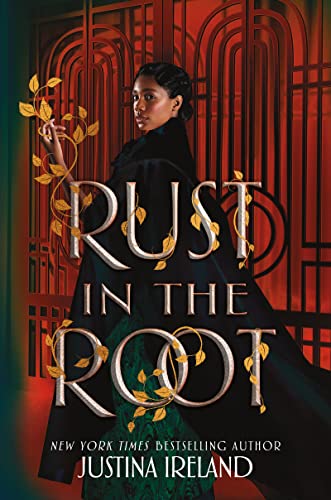Rust in the Root
Ireland’s website tagline does an excellent job of introducing her fiction: “Let’s change the system via the lens of compelling fiction.” Rust in the Root, set in 1937 New York and Ohio, builds an alternate United States with widespread magic of various brilliantly imaginative kinds. In this fantastical version of America, Ireland brings into stark (and sometimes literally horrifying) focus the racial injustices that are the poisonous legacy of slavery and its aftermath, but she does this through the separate and not equal treatment of “colored” mages and their magical traditions.
Industry and science—as a tool of business and powered by White mages—join forces with the Klan as the government turns a blind eye. Into that toxicity, Ireland adds a nuanced blend of mythic traditions from Norse to African. This is sophisticated world-building that requires an attentive reader.
The two main characters, a young queer mage, Laura Ann Langston, and her mentor, the Skylark, must stop the killing of their fellow Black mages inside what is called the Great Ohio Blight, an area drained of life and productivity. The magic practiced by Blacks is blamed for the “Blights” and the Great Rust, a magical equivalent of the Great Depression. The two women work their magic by “raveling” seeds such as okra or jacaranda into thorny warriors or other “constructs.” For example, Laura helps a bum: “I shake the sesame seeds in my hand, cupping them loosely, and call on the Possibilities.… each seed hits the ground with a hollow sound, like popping corn, raveling into a bottle of beer.” In the end, Laura and Skylark face general annihilation or saving the world from the cataclysmic effects of endemic hate that pervades America.










